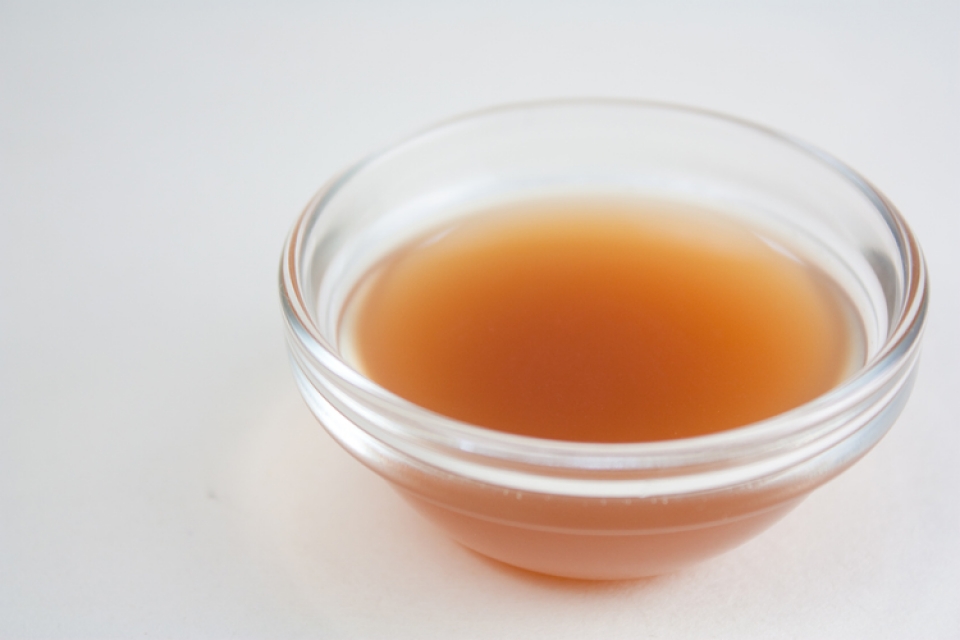Apple Cider Vinegar
If you are looking for a fairly easy, hands-off DIY project that may save you a few bucks, consider making your own apple cider vinegar! Learn more about apple cider vinegar.
Prep Time
Cook Time
Yield
Ingredients
Instructions
Gather enough apple scraps to fill a sterilized quart jar about ¾ of the way full. You’ll want to make sure your apples were grown without pesticides or chemicals, since you want to encourage fermentation. You can gather these apple scraps over the course of a few days (store in the freezer) from your snacking apples (be sure to cut off any areas that were bitten), apple peels, apple cores, or apples from our Reduced Price Produce bin. If you are using whole apples, cut them into slices first to increase surface area.
Dissolve some sugar in water (1 Tbsp sugar per 1 cup water). Add enough of the sugar water to the jar to fill and cover the apples, leaving a headspace of at least an inch. Place cheesecloth or a paper coffee filter over the top of the jar and secure with a rubber band or canning jar ring. Place the jar in a dark, warm place for about 2 weeks. After a few days, it should start to thicken, foam, and bubble.
After 2 weeks, strain out the apple scraps and pour the liquid into a clean jar. Cover again with the cheesecloth or coffee filter and store again in dark, warm place for another 2-4 weeks. You may notice a film develop on the top of the liquid and the liquid may appear cloudy. This is the “mother” (just like a SCOBY in kombucha brewing), and it can be used to jumpstart future apple cider vinegar batches.
Fermentation should have run its course 6 weeks from the start of the process. There should be some residue at the bottom of the jar and the vinegar should taste tangy. If the smell or taste doesn’t seem tangy enough, let the liquid sit a bit longer. If you are satisfied with the taste of the vinegar, screw a lid on the jar and store the bottle in your pantry or refrigerator.
Notes
*It is recommended that you do not use homemade apple cider vinegar for canning or preserving. Vinegars used for preserving need to have at least 5% acetic acid. Since most of us don’t have the tools needed to check the acid level of our homemade vinegar, it’s best to err on the side of caution.
